título: Mars By 1980 - The Story Of Electronic Music
nº de páginas: 430
isbn: 978-0-571-35129-9
data: 2018
1ª Edição / 1st Edition
CAPA:
‘An elegant,
humorous, diligently researched labour of love.’ Uncut
DAVID
STUBBS
MARS
BY 1980
THE
STORY OF ELECTRONIC MUSIC
‘If you
only buy one account of electronica, make it this… Enthralling.’ Record Collector
ff
CONTRACAPA:
‘Stubbs
unpicks a vast, sprawling and very human history … A wise, human guide.’
Victoria Segal, Sunday Times
In Mars
by 1980, David Stubbs charts the evolution of electronic music from the
earliest mechanical experiments in the late nineteenth century to the familiar
sounds of electronica, house and techno that we know today. It’s a tale of
mavericks and future dreamers overcoming Luddite resistance, malfunctioning
devices and sonic mayhem. Its beginnings may be in the world of avant-classical
composition, but the story continues through the cosmic funk of Stevie Wonder
and Giorgio Moroder, via the pioneering sounds of the BBC Radiophonic Workshop,
through unforgettable eighties electropo from the likes of Depeche Mode, the
Pet Shop Boys and Laurie Anderson, right up to present-day innovators on the
underground scene.
‘A
vitalm document. Essential Reading.’ Louder Than War
‘A
fascinating trip back to the future which stands alongside Simon Reynolds’ rave
history Energy Flash as one of the best books in the field,’ Rupert Howe, Q
‘Ân
absorbing account… This instructive book may help us listen to the world with
ears newly attuned.’
Ian
Thomson, FT Weekend
FABER
& FABER
ISBN
978-0-571-35129-9
Cover
design by Luke Bird
UK
£12.99
Pg.1
MARS BY
1980
David
Stubbs is a British author and music journalist. Alongside Simon Reynolds, he
was one of the co-founders of the Oxford magazine Monitor before going on to
join the staff at Melody Maker. He later worked for the NME, Uncut and Vox, as
well as The Wire. His work has appeared in The Times, the Sunday Times, Spin,
the Guardian, the Quietus and GQ. He has written a number of books, including
Future Days: Krautrock and the Building of Modern Germany and Fear of Music:
Why People Get Rothko but Don’t Get Stockhausen, a comparative study of
twentieth-century avant-garde music and art. He lives in London.
Further
praise for Mars by 1980:
‘Bewitching…
Fascinating.’ Jude Rogers, News Statesman
‘Mars by
1980 teems with great stuff and is destined to become one of my favourite music
books.’ Freq
‘Fascinating…
The avant-garde tape compositions of Karlheinz Stockhausen and Pierre Henry are
often seen as forbidding and cerebral, but in Stubbs’ vivid prose, they come
alive.’ List
‘Whether
writing about Stockhausen or Soft Cell, Stubbs avoids tech talk, instead
seeking out the humanity in the music, focusing on the artists who have
utilized technology to aid-self-exploration.’
Graeme
Thomson, Uncut
Pag.2
‘As
David Stubbs… so vividly illustrates in Mars by 1980, technology has been a
creative accelerant, not a brake, on the music of the past century.’ Victoria
Segal, Sunday Times
‘[A]
brilliant history,’ Choice
‘If you
want to trace a line from the work of the Futurists back in 1909 to Fatboy Slim,
then let David Stubbs take you on that journey. It’s some ride.’ The Crack,
Book of the Mouth
‘An
insightful, droll work, bouncing brightly between themes like the film
criticism of David Thomson. Open your mind.’ Prog Magazine
Pg. 3
MARS
BY
1980
The Story
of
Electronic
Music
David
Stubbs
Ff
FABER
& FABER
Pg. 4
First
published in 2018
By Faber
Limited
Bloomsbury
House
74-77
Great Russell Street
London
WC1B 3DA
This
paperback edition published in 2019
Typeset
by Ian Bahrami
Printed
in the UK by CPI Group (UK) Ltd. Croydon CRO 4YY
All
rights reserved
© David
Stubbs, 2018
ISBN
978-0-571-35129-9
Pg. 7
CONTENTS
Preface
I ix
Preface
II: One Summer xiii
Introduction 1
PART ONE
1
Electronics: A Prehistory 35
2
Futurism and the Birth of Noise 43
3 Poème Électronique:
The Long Wait of Edgar Varèse 60
4 Un
Homme Seul: Pierre Schaeffer and the Art of Scissors 79
5
Stockhausen: Beyond the Cosmos 88
6 4’ 33”
of Everything: John Cage and Other Concrète Solutions 110
PART TWO
7
Distant Galaxies, Deep Oceans: Sun Ra and Miles Davis 135
8 Deux
Femmes Seules: Derbyshire and Oram 160
9 Stevie
Wonder and the Electrification of Soul 173
PART
THREE
10 From
Suicide to the Pet Shop Boys: The Art of the Duo 197
11 They
Were the Robots: Kraftwerk and Pop Automata 221
12
Substance: From Joy Division to New Order, the Human League, Depeche Mode to
Depeche Mode 250
PART
FOUR
13 Brian
Eno, the Aphex Twin and Ambient’s Late Arrival 283
14
Cutting Up the World: From Cabaret Voltaire to J Dilla 312
15
Reverberation and Decay 343
16
Legitimacy: From Castlemorton to Skrillex 365
17
Conclusion 399
Nineteenth-
and Twentieth-Century Musical Technology: A Timeline 407
A Mars
by 1980 Plylis 412
Index 417
PREFACE
I
In
writing this book, I realized I was taking on an exciting but also invidious,
some might even say impossible, task. I wanted to take in the full range of
electronic music, rather than home in on one particular aspect, beginning with
its very earliest manifestations at the turn of the twentieth century and its
apparent global domination in the popular music of the twenty-first, with EDM
challenging rock’s long-held dominance as the default form of stadium music
entertainment.
I wanted
to take in its vast sweep, across a range of genres, create an account at once
intimate and aerial in its perspective, at once personal and historical. It´s
not, however, intended to be exhaustive. This is not a directory. I can see now
fans of particular electronic musicians, or even the musicians themselves,
reaching for this book, heading immediately for the index and finding, to their
dismay, no mention of their heroes (or themselves). I can hear the voices of
anguish. Why no mention of Super Collider and their sinuous blend of fractal
electronics and neo-soul vocals? Where is Todd Rundgren, whose synth driven A
Wizard, a True Star blazed a lightning trail through the 1970s? Why the
omission of the brilliant Tod Dockstader and Arne Nordheim from the musique
concrète list? Were they not French or female enough?
Or where
is Halim Abdul Messieh El-Dabh, the Egyptian American composer born in 1921 who
experimented with wire recorders in the early 1940s, composing music made from
field recordings in Cairo that, albeit tentative in their technology and
outcomes, pre-date Pierre Schaeffer by half a decade, and who died in 2017
having seen the electronic music he prefigured spread arterially throughout the
body of modern music? Or Jean-Jacques Perrey, early adopter of the Ondioline,
who used the techniques of musique concrete to splice together a gleefully
de-solemnised, populist take on the genre, eventually going on to work with
Luke Vibert on the album Moog Acid (2007), aged eighty? Of neither of these is
there a single mention in the entire book.
How come
no Jen-Michel Jarre, a more serious student of electronic music than his rather
son et lumière style suggests? Or Vangelis, whose soundtrack for the 1981 film
Chariots of Fire was, in retrospect, an inspired choice for a period film about
the 1924 Olympics, where a lazier, safer choice would have been an opulent,
Downton Abbey-style orchestral soundtrack?
Where
are Space? Hot Butter? Sara Brightman and Hot Gossip’s ‘I Lost My Heart to a
Starship Trooper’? And how could you possibly write an entire book of this
nature and completely ignore Kraftwerk? (It’s alright, Kraftwerk are in here.)
No
judgement is intended on those omitted. As I say, this is a personal and
selective account that is more about aspects and angles, patterns and trails
than encyclopaedic completism. Nor is it a ‘techie’ account. It’s more about
the meanings and resonances of electronic music, how the shapes it has taken,
the successes It has achieved and the failures it has suffered reflect the
hopes, fears and loathing it has inspired in humanity. It refers outside of
music into the realms of sport, TV, philosophy, the visual arts, non-electronic
music, politics, national identity, race. But predominantly it refers to the
music, made using the medium of electricity, but no guitar based. That’s
important. That such music feels less ‘real’, less organic, less heroic, more
schematic and heartlessly methodical too those wary of it is one of the
underlying themes of Mars by 1980.
The book
stretches into the twenty-first century but, as the title implies, it alludes
also to something that was lost in the twentieth century at some unspecified,
pre-postmodern moment: an idealism about the future and all that it might
contain, from socialism to space travel, dreams that now seem laughably antique
or agonizingly extinct. Mark Fisher, my late friend and colleague, felt
something along these lines. While not hoping to emulate his own cultural and
philosophical investigations, there are smatterings here and there of his
influence, not least in his abiding belief that the oppressive school of
thought established in lieu of Mars circa 1980 – that there is No Alternative
to the prescriptions of capitalism and the free market – is merely a rhetorical
sleight of hand. Electronic music has been a carrier of malignant ideas, of
date-stamped fictions and a means of disseminating mediocrity on an industrial
scale – in every gym, all the time, for a start. However, at its best, it has
opened up great vistas of possibility as to what human beings can do with their
invention and imagination, when unshackled from fear, custom and conservatism.
‘No
alternative’ was the neo-liberal mantra; ‘no future’, as jeered by Johnny
Rotten of the Sex Pistols in 1977, was the concurrent cry of despair that punk
bequeathed, which, whether it meant to or not, helped scotch the flowery,
futuristic dreams of a new Age of Aquarius as dreamt by the hippies. No future.
We’re still suffering the aftershock of that particular Song of Experience, the
cynical refrain of the post-space age, of our postmodern times in which we are
too clever, too afraid to speculate wildly on a better future of expanded
horizons. This is the historical vantage point from which Mars by 1980 surveys
over a hundred years of electronic music is made today. There are a thousand
good reasons to give way to despair, but what is there to lose by attempting to
rediscover in the electronic music of the past not merely a glow of nostalgia
but the glow of possible dormant futures that have merely been deferred?
A further
note: although the book proceeds broadly chronologically, its chapters are
thematic in a way that militates against an orderly timeline. There’s a little
bit of leaping about back and forth between the 1950s and ‘60s, 1970s and ‘90s,
and back – but we reach the twenty-first century in the end.
For
their valuable assistance, guidance and illumination I’d like to thank the
following: Dave Watkins, Ian Bahrami, Lee Brackstone and all at Faber, as well
as my agent, Kevin Pocklington; Jono Podmore, Simon Reynolds, Dan Hancox, Robin
Rimbaud, all at The Wire magazine, where I worked for two years, a brief but
packed era of immense discovery and exposure to new musics, and a chance to
meet their creators; the commissioning editors of the late Melody Maker, Vox and
Uncut, including Allan Jones and Jerry Thackray, who allowed me to meet
childhood (and adult) heroes in the flesh; Neil Mason, Rudi esch, Uwe Schütte,
Mark Wernham and Push at Electronic Sound Magazine; Luke Turner and John Doran
at The Quietus; Clive Harris, Graham Dowdall and my partner, Roshi Nasehi.
PREFACE
II: ONE SUMMER
July
1977. Britain. A late Sunday afternoon. A dormitory village, several miles from
Leeds. A lane. A bedroom in an extension above garage. A bedside table. A
fifteen-year-old boy on the bed, bedroom-bound by adolescence. A boy holding a
microphone connected to a cassette recorder next to a transistor radio, a fuzzy
mono transistor radio with a soft grey speaker. Customarily, this radio sits in
the kitchen, accruing a coating of brown grease from the cooking fat billowing
around the clock. Customarily, it’s an instrument of oppression, broadcasting
Waggoners’ Walk, The Archers, Vince Hill, Sing Something Simple, all of which
give the lie to the supersonic seventies – the sallow fifties, more like.
On a
Sunday afternoon there’s nothing to do except homework, to while away the hour
until the velveteen Tom Browne presents the suspenseful Sunday, chart show, the
first breaking news of the hit parade in any week. This is too important to be
broadcast solely on Radio 1, with its barely adequate, interference-addled
signal, so, for one hour a week only, there’s pop on Radio 2, rather than the
customary bow-tied crooners and Semprini Serenade. Unfortunately, it’s preceded
by Charlie Chester and his Sunday Soapbox – ‘With a box full of records and a
bag full of post, it’s radio soapbox and Charlie your host!’ It’s impossible
for a fifteen-year-old to make sense of. He’s billed as ‘Cheerful’ Charlie, but
it´s cheerless fare indeed, like being obliged to look on as an old uncle shows
you his yellowing collection of World War II bobbins and cigarette cards, with
the threat of a slap on the head if you’re not paying attention. These were the
1970s as lived, still coated with dark-brown war-surplus paint, barely
relieved.
This was
the context into which a new single crash-landed like Skylab.
1976.
Musicland Studio in Munich, home to the communes that gave rise to Amon Düül
but now host to an emerging disco factory. Among the musicians are Keith
Forsey, a drummer who, like Can’s Jaki Liebezeit, rejects the ostentatiousness
of soloing in favour of the discipline of keeping time with thudding, machine
precision. There’s Pete Bellote, a shy English expat who is good at framing
albums conceptually and song structure. There’s engineer Robbie Wedel, keeper
of the secrets of the Moog synthesizer, some of which, it turns out, are
unknown even to Mr Moog himself. Fibnally there’s the grand master and surveyor
of the mixing desk, Giorgio Moroder. To the fifteen-year-old, his name speaks
of sports cars, of aftershave cool, go-ahead European Teknik. Later, his
moustache, hair and shades will make him look like a Eurodisco grotesque, but
for now he exists primarily in the fifteen-year-old’s imagination. Motorik,
mobile Moroder.
Finally,
there’s Donna Summer herself, an American ex-cast member from the musical Hair
who will later refuse to limit herself as ‘merely’ a disco singer, as well as
unwisely alienate a vast segment of her audience when she gets religion and
decides to condemn the gay lifestyle. For now, however, she’s Donna Summer –
wide-eyed, energetic, gossipy, full of love and fun, a gift from heaven. This
team helped put together the epic, sensual ‘Love to Love You Baby’, but it was
banned on release for its overt sexuality. The boy had no means of hearing it
at the time, merely hearing about it. It was as mythical to the
fifteen-year-old as sex itself.
This new
track is an afterthought – an addendum to a concept album conceived by Bellote,
an Anthony Powell-esque dance backwards and forwards trough pop history and
prehistory with the ironically title of I Remember Yesterday. It’s a showcase
for Summer’s immense versatility, harking back to 1940s swing, then the Motown
era, then early-1070s badass soul, then disco as constituted in the present day
with ‘Take Me’ – and then with ‘I Feel Love’, the tomorrow that was 1977.
The
track is built like a new car, the body first. Its apparently impossible
electronic repetition and velocity is achieved by Wedel syncing two tracks in a
way that feels superhuman. It’s another feat of German ingenuity, following the
composer Paul Hindemith’s experiments in ‘motorik’ music, the investigations of
Herbert Eimert and Karlheinz Stockhausen, and, later, the inventions of Klaus
Dinger, Ralf Hütter, Jaki Liebezeit and engineers like Kurt Graupner during
Krautrock era.
‘So You
Win Again’ by Hot Chocolate is at number one. The boy resents its fatalism,
which seems to infect the pedestrian pace of the song. ‘Ma Baker’ by Boney M is
in there somewhere, another West German Confection. Emerson, Lake and Palmer
have ballooned into the Top 10 with ‘Fanfare for the Common Man’, as corny and
example of prog rock’s pretensions to classical status as ever deigned to touch
down in the charts, but snapping further back somewhere is ‘Pretty Vacant’. Two
new holes are being ripped in pop’s arse this week, and this is one of them.
The other…
Practically
the moment it beams down, ‘I Feel Love’ feels like first contact: the slow
opening of the spacecraft door, the blinding shaft of green light. This is…
what is this? Brian Eno hears it and rushes straight into David Bowie’s studio,
claiming to be holding the future in his hands. Sparks hear it and promptly
decide to ditch their band, hit up Moroder and function as an electronic duo.
And that’s just the start.
What is
this? Pure, silver, shimmering, arcing, perfectly puttering hover-car
brilliance. Space’s ‘Magic Fly’ to the power of ten. Seven inches have become
twelve. Keyboards are played with unheard-of, bionic, rotor-blade capability.
It glides the way scissors do when you achieve that perfect synergy between
mind, hand and blade, cutting through the dreary curtain of 1970s entertainment
and revealing space. Space 1977. Vo exhaust, no vapour trails, no strings, no
frills, this is a take-of. People will be left behind, people will be laid off.
May you never hear rock music again. May you never hear light orchestra music
again. May you never see Happy Days again.
Meanwhile,
Donna Summer’s vocals fall like petals from robot heaven. The machine,
threshing immaculately, owns this song; it´s for her to glide diaphanously
around it, strew it with vocal grace – minimal subject matter. The words ‘I
feel love’, applied with a mild, synthetic treatment, sound like she is
channeling the voice of machinery that has experienced an epiphany, like Star
Trek’s Commander Data discovering emotion. Except there is something coolly
indifferent about this sonic craft, indifferent even to Donna Summer as it
glides onwards and upwards, for minute after minute, powered on something far
more durable than mere human stamina. Even has the record fades away, you sense
it is still out there, puttering pneumatically away, cruising at cirrus level.
In 1973,
the boy had received a five-year diary as a Christmas present. Flicking forward
through its empty pages, he reached as far away as 1977. Maybe it was the way
the two sevens clashed, or maybe it was the chevron-like effect of the two
numbers in conjunction, but as a year it felt especially futuristic. What will
life be like in 1977? Even decades later, the feeling somehow still holds. 1977
was Star Wars, Skylab, The Six Million Dollar Man, the Sex Pistols, Summer. The
Apollo mission had closed a few years earlier, but no matter. Mars. Mars by
1980, surely. The boy was still growing, the world was still growing. Colour
television had arrived only months earlier, in the boy’s household at any rate,
and now electricity had arrived, the electricity that would take us to
uncharted space. ‘I Feel Love’ felt like the launch of an exploratory mission,
an advance probe to delineate the decades that would take us to the
twenty-first century, by which point the boy would be thirty-seven years old
with his whole life behind him.
Decades
later, the boy would still ask himself, ‘What will life be like in the year
1977?’
DAVID
STUBBS
A MARS
BY 1980 PLAYLIST
Some of
this I regard as canonical, some personal. To be used as a journey to take you
down many other wormholes.
23
Skidoo, ‘Just Like Everybody’
A Guy
Called Gerald, ‘Voodoo Ray’
Luke
Abbott, ‘Moder Driveway’
The
Advisory Service, ‘Civil Defence Is Common Sense’
Laurie
Anderson, ‘O Superman’
Aphex
Twin, ‘Didgeridoo’
The Art
Of Noise, ‘Close (to the Edit)’
Edward
Artemiev, ‘Dedication to Andrei Tarkovsky’
Robert
Ashley, Your Money My Life Goodbye
Autechre,
‘Second Scepe’
Arseny
Avraamov (arr. Miguel Molina), Symphony
of Sirens
Afrika
Bambaataa and the Soulsonic Force, ‘Looking For the Perfect Beat’
Basic
Channel, Arrange and Process (various
artists)
William
Basinski, The Disintegration Loops
Luciano
Berio, Omaggio a Joyce
Boards
of Canada, Geogaddi
David
Bowie, ‘Beauty and the Beast’
Gavin
Bryars / Alter Ego / Philip Jeck, The
Sinking of the Titanic
The Bug,
‘Superbird’
Burial, Untrue
Cabaret
Voltaire, The Voice of America, ‘Slugging fer Jesus’
John
Cage, ‘Williams Mix’
Can,
‘Moonshake’
Carter
Tutti Void, ‘f=(2.7)’
Suzanne
Ciani, Concert at Phill Niblock’s Loft
Dave
Clark, Live at Lowlands Festival
Cluster,
‘Rosa’ (from Zuckerzeit)
Coil,
‘Sex With Sun Ra’
Holger
Czukay, Movies
D.A.F., Gold Und Liebe
Daft
Punk, Homework, ‘Digital Love’
Miles
Davis, ‘Yesternow’ (from Jack Johnson),
‘He Loved Him Madly’ (from Live/Evil)
De La
Soul, ‘Eye Know’
Deadmau3,
‘The Veldt’
Deathprod,
Morals and Dogma
Depeche
Mode, ‘A Pain thet I’m Used To’ (Jacques Lu Cont remix)
Delia
Derbyshire and Barry Bermange, ‘There Is A God’
J Dilla,
Donuts
Terrence
Dixon, From The Far Future
Todd
Dockstader, Eight Electronic Pieces
Einstürzende
Neubauten, ‘Engel der Vernichtung’
Halim
El-Dabh, The Expressions of Zaar
Brian
Eno, Music For Airports, On Land
Faust, Faust, Faust So Far
Fennesz,
‘Rivers of Sand’
Luc
Ferrari, Music Promenade
Foul
Play, ‘Open Your Mind’
John
Foxx, London Overgrown
Front
242, ‘Headhunter’
The
Future Sound Of London, ‘Papua New Guinea’
Gas, Königsforst
Godley
and Crème, ‘Under Your Thumb’
Goldie,
‘Jah the Seventh Seal’ (from Inner City
Life)
Manuel
Göttsching, E2-E4
Laurel
Halo, ‘Jelly’
Herbie
Hancock, Sextant
Harmonia,
‘Sehr Kosmisch’
Heaven
17, ‘(We Don’t Need This) Fascist Groove Thang’
Tim
Hecker, Ravendeath, 1972
Matthew
Herbert, One Pig
Holly
Herndon, Movement
Human
League, ‘The Dignity of Labour’, ‘Love Action’
Humanoid,
‘Stakker Humanoid’
Janet
Jackson, Rhythm Nation 1814
Japan,
‘Life In Tokyo’
Philip
Jeck, ‘Fanfares’
Joy
Division, Closer
Leyland
Kirby, ‘Stralauer Peninsula’
KLF, Chill Out
Kode 9 +
the Spaceape, ‘Ghost Town’
Kraftwerk,
Autobahn, Trans-Europe Express, The Man-Machine, Computer World
LA
Style, ‘James Brown Is Dead’
Ladytron,
‘Playgirl’
Thomas
Leer, Four Movements EP
Letherette,
Space Cuts
Liaisons
Dangereuses, ‘Los Ninos Del Parque’
György
Ligeti, ‘Artikulation’
Madlib,
‘Shadows Of Tomorrow’
Mantronix,
‘Megamix (in Full Effect 1988)’
Matmos, The Civil War
John
Maus, We Must Become the Pitless Censors
of Ourselves
Derrick
May, ‘It Is What It Is’
Joe Meek,
‘I Hear a New World’
Merzbow,
Merzbient
Metamono,
‘Warszava’
M.I.A.,
‘Born Free’
Jeff
Mills, ‘Cubango’
Janelle
Monáe, The ArchAndroid
Luigi
Nono, Ommagio a Emilio Vedova
Gary
Numan, ‘Cars’
Pauline
Oliveros, ‘Bye Bye Butterfly’
Daphne
Oram, Four Aspects
The Orb,
‘A Huge Ever Growing Pulsating Brain that Rules from the Centre of the
Ultraworld’
Edith
Pade, ‘Faust’
Man
Parrish, ‘Hip-Hop Be Bop (Don’t Stop)’
Aneette
Peacock, ‘I’m the One’
Pere
Ubu, ‘Non-Alignment Pact’
Lee
‘Scratch’ Perry, ‘Soul Fire’
Pet Shop
Boys, ‘Rent’
Henri
Pousseur and Michael Butor, Paysages
Planetaires
Prine,
‘If I Was Your Girlfrien’
Jamie
Principle, ‘Baby Wants to Ride’
Pyrolator,
‘Happiness’
Éliane
Radigue, Trilogie de la Mort
Steve
Reich, ‘Come Out’
Robert
Rental and the Normal, Live At West
Runton Pavilion
Porter
Ricks, ‘Port Gentil’
Roxy
Music, ‘Virginia Plain’
Rufige
Kru, ‘Ghosts of My Life’
George
Russell, Electronic Sonata for Souls
Loved by Nature
Pierre
Schaeffer and Pierre Henry, Orphée
Conrad
Schnitzler, ‘Fata Morgana’
Paul
Schütze, ‘Tears’
Raymond
Scott, ‘Light Works’
Scritti
Politti, Cupid & Psyche 85
Scuba,
‘Adrenalin’
DJ
Shadow, Entroducing
Skinny
Puppy, ‘Harsh Stone White’
Soft
Cell, ‘Memorabilia’
Mark
Stewart, ‘Forbidden Colour’
Karlheinz
Sotckhausen, Gesang de Jünglinge, Kontakte, Hymnen
Morton
Subotnick, ‘Silver Apples of the Moon’
Suicide,
‘Frankie Teardrop’ (from Suicide),
‘Touch Me’
Donna
Summer, ‘I Feel Love’
Sun Ra,
Media Dreams, ‘I’ll Wait For You’
Supercollider,
‘Gravity Rearrangin’’
Tangerine
Dream, Zeit
Telex,
‘Moscow Discow’
This
Heat, ’24 Track Loop’
Throbbing
Gristle, ‘Tesco Disco’, ‘Discipline’
Underground
Resistance, ‘Afrogermanic’
Edgar
Varése, Déserts, Poème Électronique
Video-Adventures,
‘Tina’ (from Musiques pour garcons et
filles)
White
Noise, An Electric Storm
Stevie
Wonder, Music of My Mind, Innervisions
Iannis
Xenakis, Orient/Occident
Xhin,
‘Vent’
Yello, You Gotta Say Yes to Another Excess
Yellow
Magic Orchestra, Technodelic
Young
Gods, ‘Jimmy’
Zapp, ‘Computer
Love’
Zomby, Where Were U in ´92?













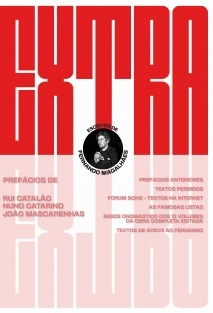
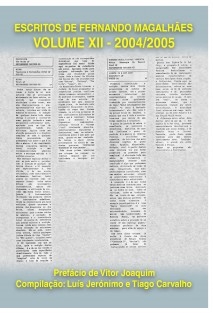




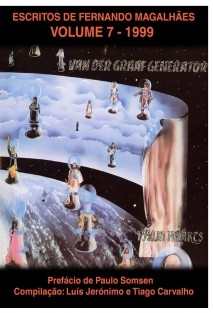
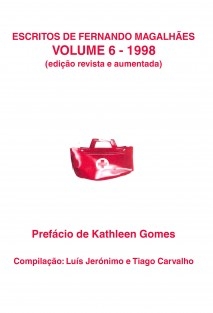
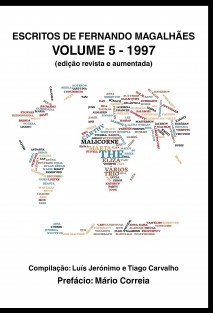
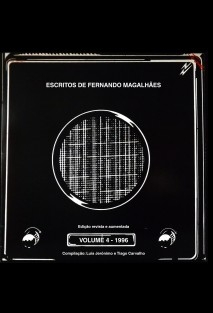
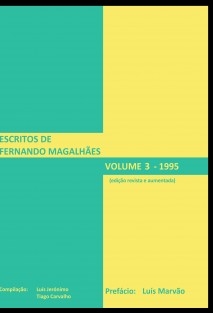



_Bubok.jpg)
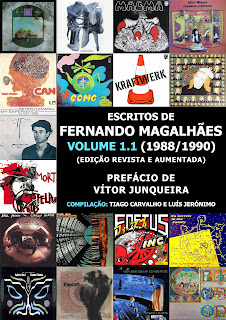





















Sem comentários:
Enviar um comentário